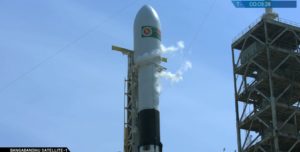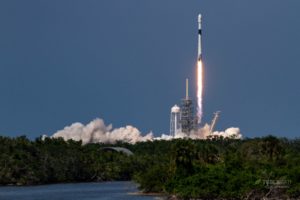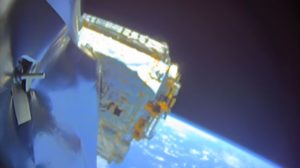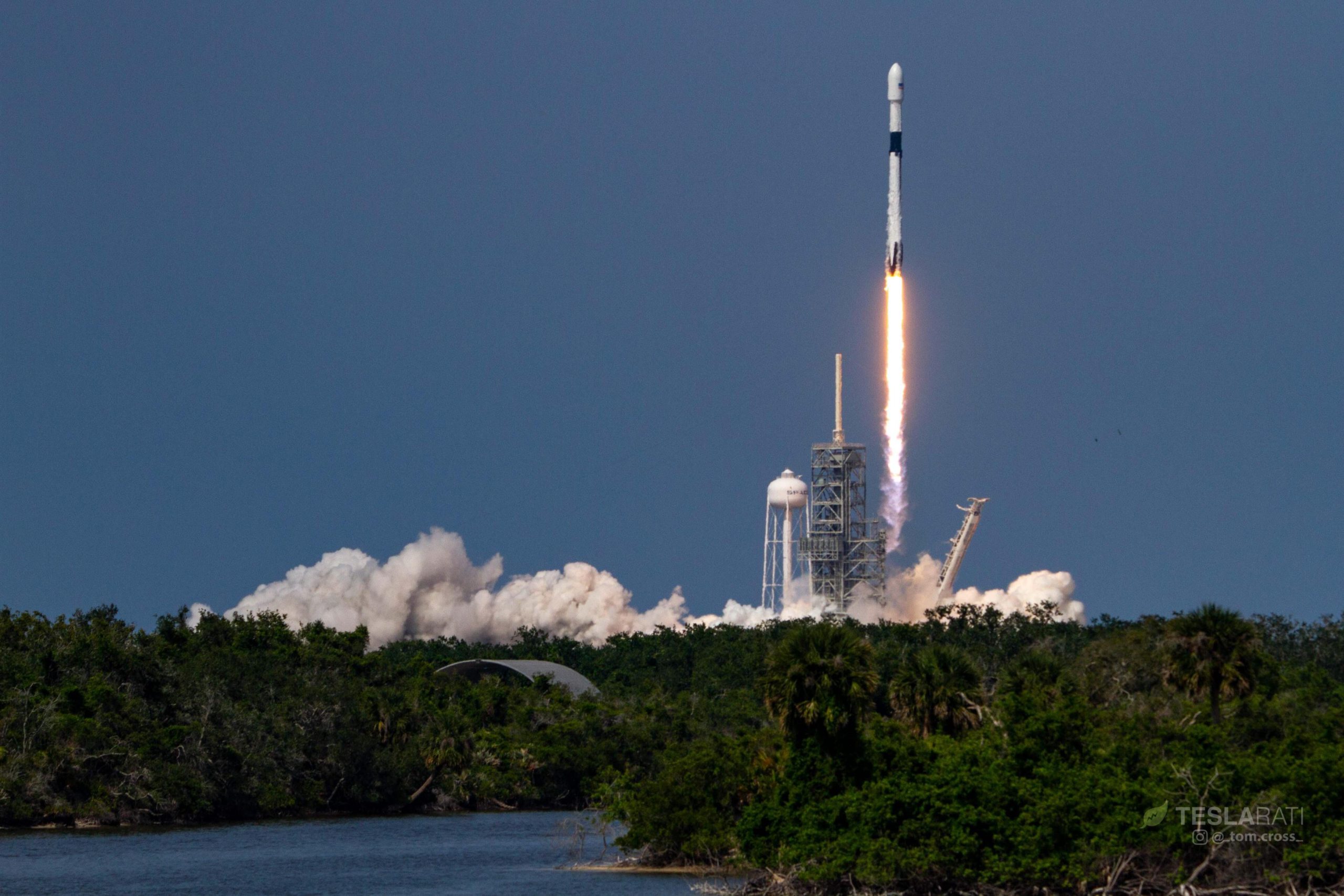

News
SpaceX’s successful debut of Falcon 9 Block 5 heralds the future of reusable rocketry
Following a brief software bug-triggered abort during the first attempt, SpaceX has successfully debuted its first Falcon 9 Block 5 rocket from Florida’s Kennedy Space Center, marking the true beginning of a new era of highly reusable commercial rocketry, as well as Bangladesh’s official entry into satellite communications with the Bangabandhu-1 satellite.
Followed minutes later by the first landing of its next-generation booster aboard the ocean-going drone ship Of Course I Still Love You (OCISLY), many more Falcon 9 Block 5 launches can now be expected to follow later this year as SpaceX ramps up the manufacture and shipment of new boosters, upper stages, and payload fairings to its test and launch facilities.
Fundamentally, this launch is a historic achievement for SpaceX. According to CEO Elon Musk, barring unforeseen discoveries during the pathfinder booster’s post-recovery teardown, Falcon 9 Block 5 as it stands today is nearly capable of ushering in a new era of truly reusable rockets, and is designed to (nominally) fly as many as ten times in a row with the barest minimum of refurbishment. While it is all but guaranteed that small optimizations and upgrades will continue to be made throughout the launch vehicle, today’s mission – the 25th successful booster landing and 55th launch of Falcon 9 – by all appearances successfully flight-tested almost every single one of the rocket’s dramatically upgraded systems, ranging from entirely new avionics to uprated and upgraded Merlin engines and landing legs.
- F9 B1046 venting ahead of its inaugural launch. (SpaceX)
- Falcon 9 Block 5 successfully debuted earlier today, completing a nearly-flawless launch and landing. (Tom Cross)
Somewhat fittingly, the only problem visible on the company’s webcast of the rocket’s critical debut was with the webcast itself, in the form of some odd shaking and connectivity issues on the first stage (and the second stage to a lesser degree). Thankfully, this “bug” is skin-deep – its only negative impact was mild annoyance among the many thousands watching live, a small price to pay to such an extraordinary show. Falcon 9 B1046 and its upper stage performed nominally, landing aboard the drone ship Of Course I Still Love You and flawlessly placing Bangladesh’s first geostationary communications satellite into a transfer orbit.
- OCISLY patiently awaits its rocket friend. (SpaceX)
- B1046 completes successfully landed aboard OCISLY; hopefully the first of many more to come. (SpaceX)
With its debut complete, SpaceX’s first Block 5 booster will now head back to Port Canaveral after being safely secured by everyone’s favorite rocket-grabbing robot. After its return to land, it’s extremely likely that SpaceX will choose to transport the rocket back to either Hawthorne or McGregor to conduct an extremely thorough teardown analysis of the booster, checking to ensure that each component and system made it through a high-energy reentry with minimal impact. While small changes are all but guaranteed, this teardown will hopefully confirm SpaceX’s extensive modeling and ground-testing – in other words, Block 5’s design will hopefully be shown to be ready for rapid reusability and extreme reliability. More likely than not, B1046 will then be reassembled, perhaps followed by extensive static-fire testing in Texas, after which it will likely return to SpaceX’s operational rocket fleet, potentially conducting dozens of launches over the next several years. Perhaps SpaceX will choose to turn it into a new historic monument after several reflights.
Finally, congratulations to Bangladesh on the successful launch of their first geostationary communications satellite.
- Inside Falcon 9’s interstage before stage separation. Note MVac and its massive nozzle. (SpaceX)
- Bangabandhu-1 was successfully deployed just over half an hour after lifting off from the coast of Florida. (SpaceX)
Launch photographer Tom Cross is planning to be there in person for OCISLY and B1046’s arrival in Port, and will hopefully be able to document the historic recovery and the booster’s (fingers crossed) resilience, as well as the first use of Octagrabber with a Block 5 Falcon 9. Remote camera pickup is currently scheduled for tomorrow morning.
Follow us for live updates, behind-the-scenes sneak peeks, and a sea of beautiful photos from our East and West coast photographers.
Teslarati – Instagram – Twitter
Tom Cross – Twitter
Pauline Acalin – Twitter
Eric Ralph – Twitter

News
Tesla lands approval for Robotaxi operation in third U.S. state
On Tuesday, Tesla officially received regulatory approval from the State of Arizona, making it the third state for the company to receive approval in.

Tesla has officially landed approval to operate its Robotaxi ride-hailing service in its third U.S. state, as it has landed a regulatory green light from the State of Arizona’s Department of Transportation.
Tesla has been working to expand to new U.S. states after launching in Texas and California earlier this year. Recently, it said it was hoping to land in Nevada, Arizona, and Florida, expanding to five new cities in those three states.
On Tuesday, Tesla officially received regulatory approval from the State of Arizona, making it the third state for the company to receive approval in:
BREAKING: Tesla has officially received approval from the Arizona Department of Transportation to launch its Robotaxi service on public roads in the state!
I just confirmed directly with the Arizona DOT that @Tesla applied for a Transportation Network Company permit on Nov 13th.… pic.twitter.com/iKbwfGfiju
— Sawyer Merritt (@SawyerMerritt) November 18, 2025
Tesla has also been working on approvals in Nevada and Florida, and it has also had Robotaxi test mules spotted in Pennsylvania.
The interesting thing about the Arizona approval is the fact that Tesla has not received an approval for any specific city; it appears that it can operate statewide. However, early on, Tesla will likely confine its operation to just one or two cities to keep things safe and controlled.
Over the past few months, Robotaxi mules have been spotted in portions of Phoenix and surrounding cities, such as Scottsdale, as the company has been attempting to cross off all the regulatory Ts that it is confronted with as it attempts to expand the ride-hailing service.
It appears the company will be operating it similarly to how it does in Texas, which differs from its California program. In Austin, there is no Safety Monitor in the driver’s seat, unless the route requires freeway travel. In California, there is always a Safety Monitor in the driver’s seat. However, this is unconfirmed.
Earlier today, Tesla enabled its Robotaxi app to be utilized for ride-hailing for anyone using the iOS platform.
News
Tesla ride-hailing Safety Monitor dozes off during Bay Area ride
We won’t try to blame the camera person for the incident, because it clearly is not their fault. But it seems somewhat interesting that they did not try to wake the driver up and potentially contact Tesla immediately to alert them of the situation.
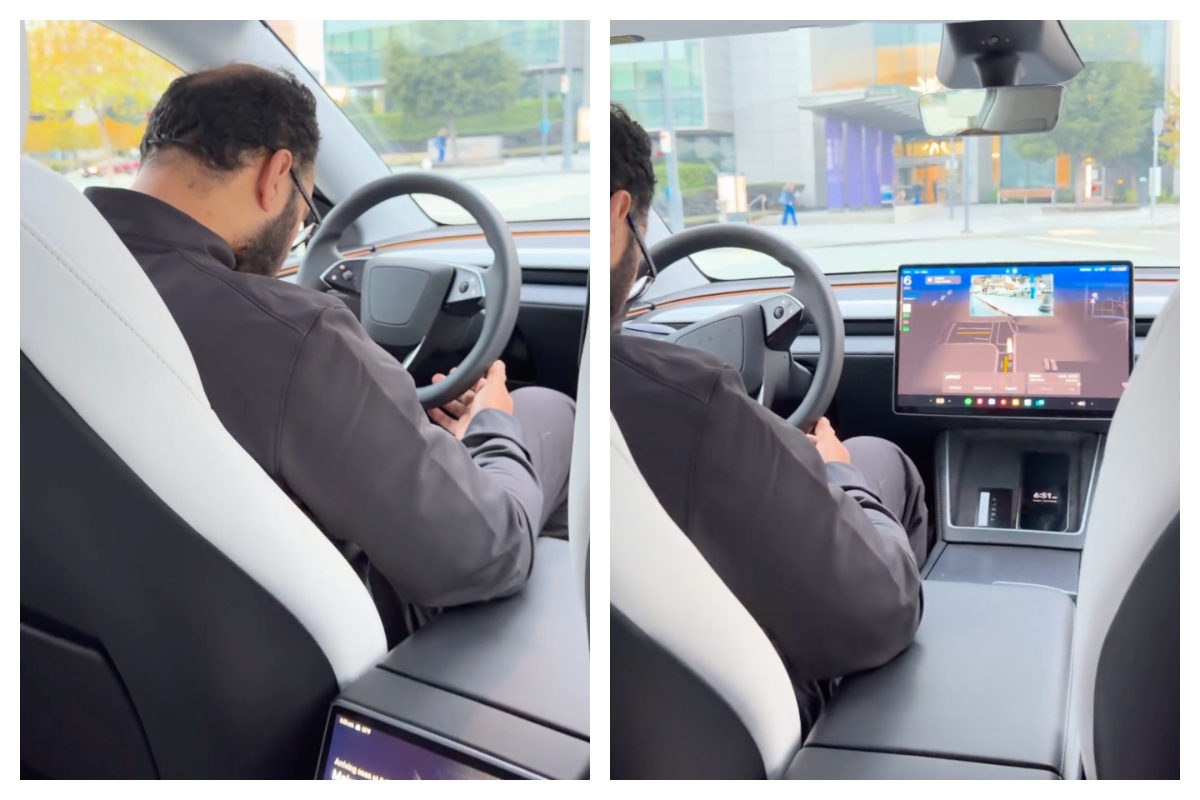
A Tesla Robotaxi Safety Monitor appeared to doze off during a ride in the California Bay Area, almost ironically proving the need for autonomous vehicles.
The instance was captured on camera and posted to Reddit in the r/sanfrancisco subreddit by u/ohmichael. They wrote that they have used Tesla’s ride-hailing service in the Bay Area in the past and had pleasant experiences.
However, this one was slightly different. They wrote:
“I took a Tesla Robotaxi in SF just over a week ago. I have used the service a few times before and it has always been great. I actually felt safer than in a regular rideshare.
This time was different. The safety driver literally fell asleep at least three times during the ride. Each time the car’s pay attention safety alert went off and the beeping is what woke him back up.
I reported it through the app to the Robotaxi support team and told them I had videos, but I never got a response.
I held off on posting anything because I wanted to give Tesla a chance to respond privately. It has been more than a week now and this feels like a serious issue for other riders too.
Has anyone else seen this happen?”
My Tesla Robotaxi “safety” driver fell asleep
byu/ohmichael insanfrancisco
The driver eventually woke up after prompts from the vehicle, but it is pretty alarming to see someone like this while they’re ultimately responsible for what happens with the ride.
We won’t try to blame the camera person for the incident, because it clearly is not their fault. But it seems somewhat interesting that they did not try to wake the driver up and potentially contact Tesla immediately to alert them of the situation.
They should have probably left the vehicle immediately.
Tesla’s ride-hailing service in the Bay Area differs from the one that is currently active in Austin, Texas, due to local regulations. In Austin, there is no Safety Monitor in the driver’s seat unless the route requires the highway.
Tesla plans to remove the Safety Monitors in Austin by the end of the year.
News
Tesla opens Robotaxi access to everyone — but there’s one catch

Tesla has officially opened Robotaxi access to everyone and everyone, but there is one catch: you have to have an iPhone.
Tesla’s Robotaxi service in Austin and its ride-hailing service in the Bay Area were both officially launched to the public today, giving anyone using the iOS platform the ability to simply download the app and utilize it for a ride in either of those locations.
It has been in operation for several months: it launched in Austin in late June and in the Bay Area about a month later. In Austin, there is nobody in the driver’s seat unless the route takes you on the freeway.
In the Bay Area, there is someone in the driver’s seat at all times.
The platform was initially launched to those who were specifically invited to Austin to try it out.
Tesla confirms Robotaxi is heading to five new cities in the U.S.
Slowly, Tesla launched the platform to more people, hoping to expand the number of rides and get more valuable data on its performance in both regions to help local regulatory agencies relax some of the constraints that were placed on it.
Additionally, Tesla had its own in-house restrictions, like the presence of Safety Monitors in the vehicles. However, CEO Elon Musk has maintained that these monitors were present for safety reasons specifically, but revealed the plan was to remove them by the end of the year.
Now, Tesla is opening up Robotaxi to anyone who wants to try it, as many people reported today that they were able to access the app and immediately fetch a ride if they were in the area.
We also confirmed it ourselves, as it was shown that we could grab a ride in the Bay Area if we wanted to:
🚨 Tesla Robotaxi ride-hailing Service in Austin and the Bay Area has opened up for anyone on iOS
Go download the app and, if you’re in the area, hail a ride from Robotaxi pic.twitter.com/1CgzG0xk1J
— TESLARATI (@Teslarati) November 18, 2025
The launch of a more public Robotaxi network that allows anyone to access it seems to be a serious move of confidence by Tesla, as it is no longer confining the service to influencers who are handpicked by the company.
In the coming weeks, we expect Tesla to then rid these vehicles of the Safety Monitors as Musk predicted. If it can come through on that by the end of the year, the six-month period where Tesla went from launching Robotaxi to enabling driverless rides is incredibly impressive.
